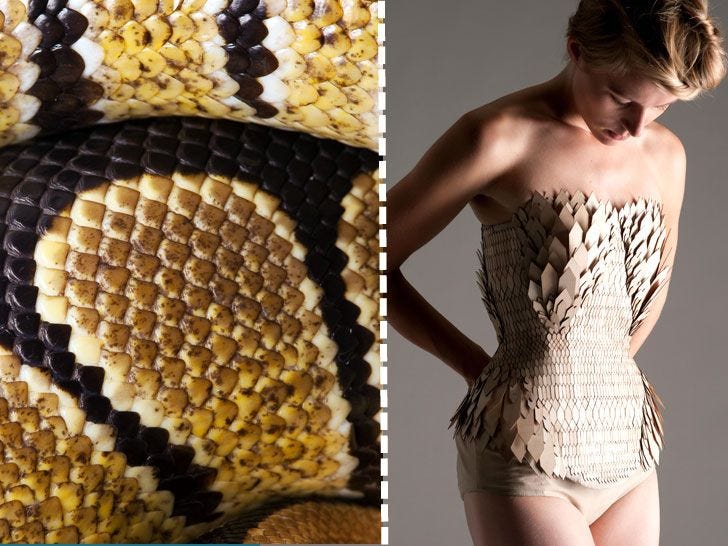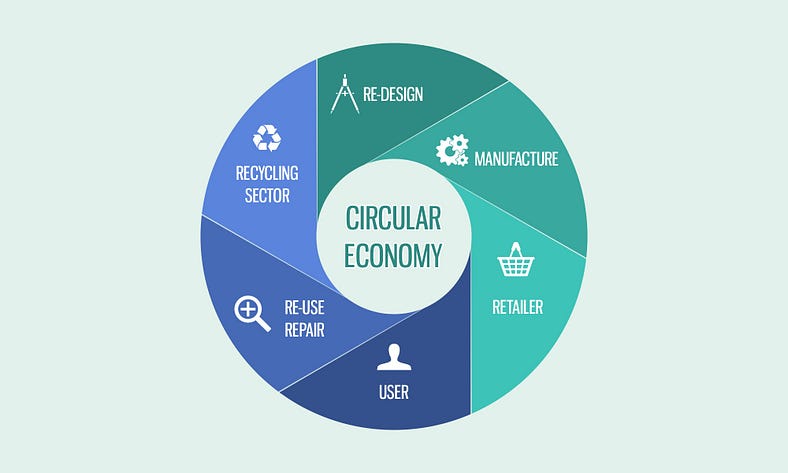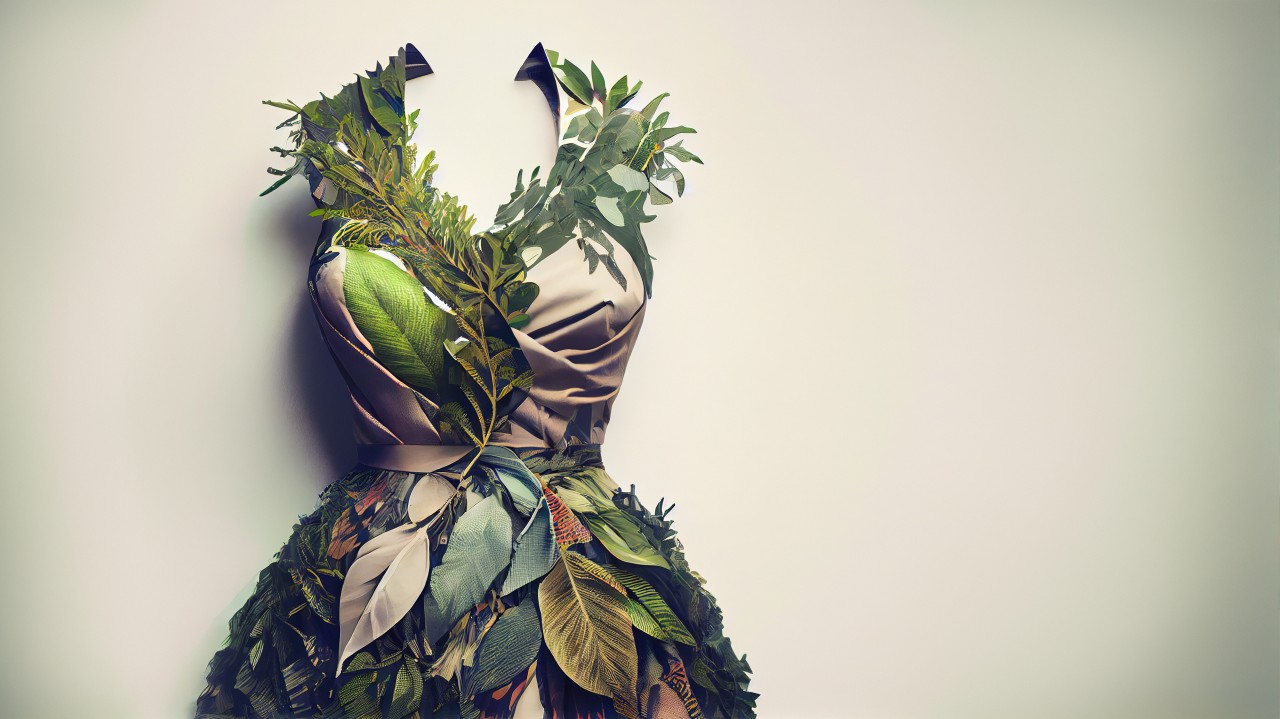In the ever-evolving world of fashion design, sustainability and innovation have become paramount considerations. As the fashion industry grapples with its environmental impact, designers and researchers are turning to nature for inspiration — a concept known as biomimicry. Biomimicry is the practice of drawing ideas and solutions from the natural world to create more sustainable and efficient designs. This approach is gaining popularity in various fields, and now it is making waves in the realm of fashion design, offering a fresh perspective on how we can harmonize our love for style with a deep respect for the planet.
The Inspiration from Nature’s Flora and Fauna:
Nature’s flora and fauna are a treasure trove of design inspiration for fashion creators. From the intricate patterns of butterfly wings to the efficient structure of spider silk, the natural world offers endless possibilities for innovative designs. For instance, the lotus flower’s ability to repel water and self-clean has inspired the development of fabrics with similar properties, reducing the need for harmful chemical treatments in clothing production.

Biomimicry goes beyond mere aesthetics and delves into the functional aspects of design. The structural strength of bones and antlers has led to the creation of lightweight and robust materials for accessories and footwear. Additionally, studying the thermal regulation of animals has paved the way for breathable and insulating fabrics that can adapt to changing weather conditions, reducing the need for excessive layering.
Sustainable Textiles and Materials:
One of the key areas where biomimicry is influencing fashion design is in the search for sustainable textiles and materials. Traditional fabric production often involves resource-intensive processes and the use of harmful chemicals, contributing to pollution and ecological damage. Biomimicry seeks to emulate nature’s resource-efficient strategies to find more eco-friendly alternatives.
For instance, researchers have been inspired by the strength and flexibility of spider silk, a material that is biodegradable and requires fewer resources to produce compared to synthetic fibers. By harnessing this knowledge, scientists have been working on creating bioengineered spider silk or developing silk-like materials from other sustainable sources like bacterial cellulose or agricultural waste.

Another example comes from the lotus effect mentioned earlier, where designers have been able to develop water-repellent fabrics without resorting to toxic chemicals. These biomimetic fabrics are not only environmentally friendly but also hold great promise for reducing water consumption in the fashion industry.
The Role of Biomimicry in Sustainable Production:
Beyond materials, biomimicry has the potential to revolutionize the entire production process in the fashion industry. Nature has perfected the art of circularity and waste reduction over billions of years, and by studying these processes, fashion designers can implement more sustainable practices.
One such example is the concept of “closed-loop” systems, inspired by ecosystems, where waste from one process becomes a valuable resource for another. This mimics the nutrient cycles in nature, where nothing goes to waste. By adopting similar principles, fashion companies can develop sustainable supply chains and reduce their reliance on virgin resources.

Biomimicry also encourages a shift towards local and decentralized production. Just as nature thrives in diverse and adaptable ecosystems, fashion brands can create localized production hubs, utilizing region-specific materials and techniques. This not only cuts down on transportation emissions but also fosters a stronger connection between fashion and culture.
Embracing Biodiversity and Cultural Heritage:
Biomimicry promotes a holistic approach to design that goes beyond mimicking shapes and structures. It emphasizes the importance of biodiversity and cultural heritage in shaping sustainable fashion. By drawing inspiration from different ecosystems and indigenous cultures, designers can create unique and meaningful designs while supporting local communities.

Incorporating elements from various cultures and traditions not only celebrates diversity but also helps preserve valuable knowledge and craftsmanship. Collaborating with indigenous artisans can provide new perspectives on design and open up avenues for sustainable practices that have been ingrained in their culture for generations.
Challenges and Opportunities:
While biomimicry holds immense promise for revolutionizing fashion design, it also presents its own set of challenges. The fashion industry has been deeply entrenched in fast-paced and profit-driven practices, making the shift toward sustainable biomimetic design a gradual process.
Education and awareness play a pivotal role in overcoming these challenges. Fashion schools and industry leaders need to integrate principles of biomimicry into their curriculum and design processes. Collaboration between scientists, designers, and manufacturers is essential to drive innovation and bring biomimetic designs to the mainstream fashion market.

Moreover, policymakers and consumers need to support this transition. Incentives for sustainable practices, regulations to reduce environmental impacts, and consumer demand for eco-friendly products can create a conducive environment for biomimicry to thrive.
Biomimicry in fashion design is not just a fleeting trend but a fundamental shift in perspective towards more sustainable and responsible practices. By taking cues from nature’s brilliance, designers can create functional and aesthetically pleasing designs that are in harmony with the environment.
From materials to production processes, biomimicry offers a blueprint for a fashion industry that respects nature’s wisdom and values cultural diversity. Embracing biomimicry is not only a way to stay fashionable; it is a commitment to the well-being of our planet and all its inhabitants.
As we continue to explore nature’s solutions, we can look forward to a future where fashion is not just an expression of style but a celebration of sustainability and innovation.
For more blogs related to design: https://www.dotsod.in/blog/
Follow DOT School of Design in Facebook, Instagram, LinkedIn, Medium and YouTube

